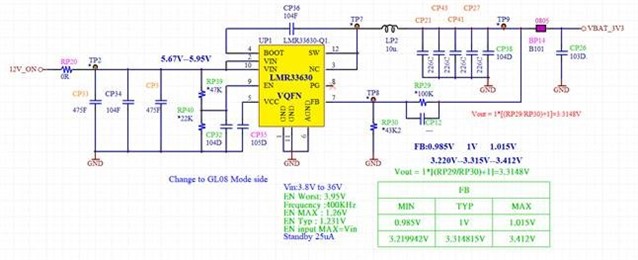Hi Sir,
We knew the electrical characteristics of the datasheet that provided typical values at TJ = 25°C, my customer is asking for how to calculate the 3.3V-out tolerance range at TJ = -40C ~ +85C.
If the LMR33630AQRNXRQ1 is working at TJ = +85C, is the Vfb value different from TJ at +25C?
Except Rfbt, Rfbb, and Vfb, are there any parameters that need to be considered? (Rfbt and Rfbb both are used 1% tolerance)
Or is there any document or calculation formula that can share with them?


